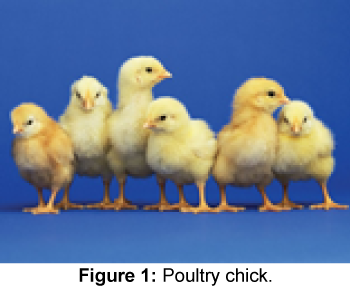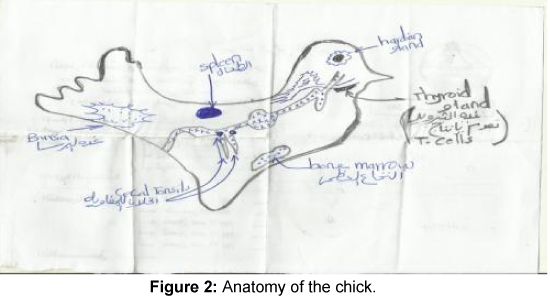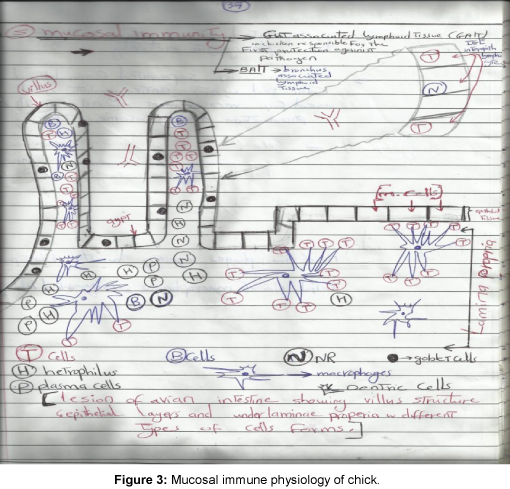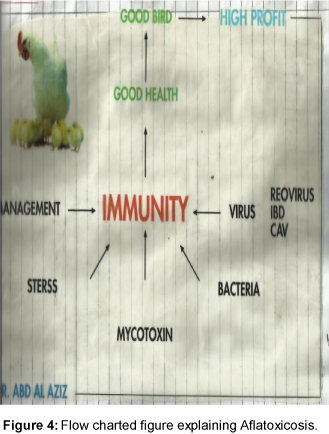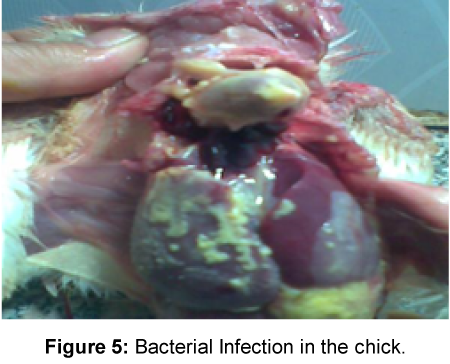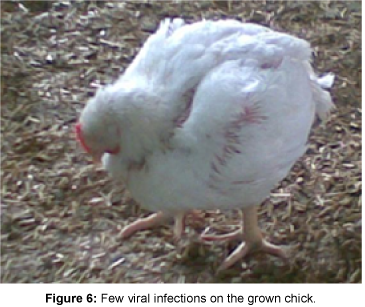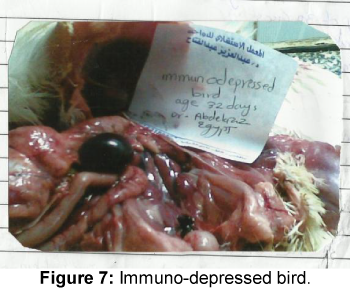Research Article Open Access
Callinectid Crab Abundances, and Movements of Tagged Blue Crabs (Callinectes sapidus) in the Cape Fear River and Adjacent Waters, North Carolina
Abdelfatah A*
Avian Lab for Disease Diagnosis, 1st Labarotary in Elamnsoura City, Canal Suez Road towards the Camp Egypt, Egypt
- *Corresponding Author:
- Abdelfatah A
Poultry Consultant and Director of the Avian Lab for Disease Diagnosis
1st Labarotary in Elamnsoura city
Canal Suez Road towards the Camp Egypt, Egypt
Tel: 0020123189524
E-mail: drabdelazizpoultrylab@yahoo.com
Received date October 13, 2015; Accepted date May 13, 2016; Published date June 06, 2016
Citation: Abdelfatah A (2016) Building of Immune System in Poultry Chick for the Development of Future Poultry Industry. J Fisheries Livest Prod 4:186. doi: 10.4172/2332-2608.1000186
Copyright: © 2016 Abdelfatah A. This is an open-access article distributed under the terms of the Creative Commons Attribution License, which permits unrestricted use, distribution, and reproduction in any medium, provided the original author and source are credited.
Visit for more related articles at Journal of Fisheries & Livestock Production
Abstract
A six year (1973-1978) 23 stations survey of the Cape Fear River and the adjacent waters was instituted to determine the effects of the CP&L (now Duke) Brunswick 1,979 MW nuclear power plant on the biota, especially crabs, frequenting the area. Callinetes sapidus, blue crabs, were the most abundant of the five Callinectid crabs collected. Only 180 or 0.5% of tagged C. sapidus were impinged of the power plant intake screens.
Introduction
Fowls, like all animals, have very strong, built-in defences (immunity) against diseases that are caused by invasion of the body by various microorganisms and toxins (collectively called ‘antigens’).
These defences include:
The skin
The skin is a barrier against invasion of the body by microorganisms. It is only when the skin barrier is broken that invasion through the skin can occur.
Mucous membranes
These linings of the digestive tract, respiratory tract and other body systems provide a good barrier against invasion by microorganisms. If anything should harm the mucous membranes invasion may occur. An example is when diets deficient in vitamin A cause damage to the mucous membranes which results in an increase in the incidence of infectious disease.
The immune system
Notwithstanding the efficiency of the skin and the mucous membranes as defence mechanisms, microorganisms often find their way into the body. Many of these are harmless, while others cause disease, usually specific diseases caused by specific organisms.
The primary role of the immune system is to recognise organisms and substances that are considered foreign, or “non-self” (antigens), that are able to enter the body. The immune system initiates and manages the appropriate physiological responses to neutralize and/ or eliminate these “non-self” organisms and substances. A variety of mechanisms are employed to achieve this goal, including inactivation of biological agents, lysis (rupture) of foreign cells, agglutination (clumping) or precipitation of molecules or cells, or phagocytosis (engulfing and inactivating) of foreign agents.
For an immune response to be effective, the right mechanism, or combination of mechanisms, must be activated. However, for each species there are many diseases for which immunity does not exist. Also, under certain circumstances, these normally protective responses can result in significant tissue damage, which leads to immunemediated diseases (Figure 1).
The immune system is a highly complex physiological system that is yet to be fully understood. New discoveries are still being made regarding the role of different organs and physiological compounds in immune responses and this section contains only a brief and simple description of the major components of the immune system and the immune response.
Whether or not a bird develops a disease after such an invasion will depend on how well it fights the invasion, that in turn depends on:
• The bird’s condition, state of wellbeing and level of immunity.
• The number of the invading organisms, called ‘the challenge’.
• The virulence or strength of the invading organisms.
The immune system of the bird is the army of birds against enemies like (viruses, bacteria) which prevent this bacteria and viruses from entering to birds through gates and inlets. From this point of view we must establish good immune system (good army) from the first day when chick enter farm by the following:
• Take chick from good dame of good and popular company of grand parents
• Give good balanced ration in the starter and give plenty of feed and water in the broading period of the first 7 days as the chick for example in first day weighted 50 grm and at 7 days weight 125 grm and at 20 days weight 500 grm at the broiler weight (this differs from company breed to another).
So, when we measure the increase in weight we will notice the bird increase for about 2 double and half in comparable with the last weighting until 20 day so the period of 7 days will be very important as the formity and good immune system" established gut development formation occur.
So, the plenty of feed, good temperature, No stress will be preferable in this period of time) (dr. abdelaziz 2013)
Poultry Immune System
Poultry immune system is classified into 3 categories
• Innate immunity (non specific immunity)
• Acquired immunity (specific immunity, humaral)
• Passive immunity(maternal immunity) Active immunity.
Lymphokines
Innate immunity, non-specific immunity
• Genetic Factors
• Body Temperature
• Anatomical Features-Many disease organism can't penetrate the intact body covering as skine - mucous membrane) or at taped in mucous secretion, some nutritional deficiency like (biotin deficiency), injury or infectious disease compromise the body covering allowing the penetration by disease organisms.
• Normal microflorae Skine and gut normally maintain a dense stable microbial population
• Respiratory tract cilia parts of respiratory tract are lined w fine hair like protrusions called cilia which remove disease organism and debris.
Acquired immunity
• Passive immunity (maternal immunity
• Which give the bird normal immunity for about 7 days old chick to protect the bird within this 7 days.
• (Active immunity and lymphocytes)
• When foreign body can tinge like bacteria or viruses enter the body of birds through orifices the body produce. phagocyte callad (macrophages) which called anti body which consists from special protein called globulin protein which spread at every part in the bird body.
• This phagecystic cells eats the antigen (foreign bodies) Macrophages produce a (pass cells) message to certain lymphocyte and this lymphocyte that reactive the message originated either (Figure 2).
a) Types
IgM: is seen early in the infection Action is the agglutination w the invader.
IgG: classes of antibodies that measured with Eliza. Have shape like Tail which interact with invader and decompose them.
IgA: secretory antibody which manufactured by B cells in respiratory and in gastrointestinal tract as the infection is primary located on the surface of intestinal tract and considered as a primary defense mechanism as soon as B and T cells which receive the go message from phagocytic cells then enter spleen (secondary lymphoid origin).
Types of active immunity
• Thymus gland (lymphocyte) produce T lymphocyte which regulate Ab production by stimulation or inhibition the formation of B lymphocyte as in case of (pox – Herpes virus – mycobacterium or eimera spp)
• Bursa of Fabricus Produce B cells w occur at dorsal part of cloacae.
• Spleen, harridan gland is the site of local immunity production and the action occur under the control of bursa.
• Cecal Tonsils: Produce antibodies passes (T and B cells) also produce 19 G and IgA.
• Mucosal immunity: Galt associated lymphoid tissue (GALT) in chicken responsible for the first protection against pathogen.
• BALT……. bronchus associated lymphoid tissue (Figure 3).
Factors Affecting the Birds Immunity
Aflatoxicosis
This aflatoxicosis was clearly shown in flow charted Figure 4.
Have a very big bad effect on the immune system of the birds. Aflatoxin increases susceptibility of birds to (salmonellae, aspergillus's, coccidosis, mark's disease, E. coli and infectious bursal disease).
• The effect of mycotoxins affects on immunity depends on the duration of toxin consumption, age and genetic strain of birds.
• Ochratoxins, T2 toxin and fumonisins cause depression in antibody producing cells in the lymphoid organs and decrease size of bursa and thymus.
Nutritional disorders
• Diet affect on immunity as low protein ration and the diet which deficient in selenium result in immune depression.
• Diet which contain valine decrease antibody to N.D
• Diet low in B complex, vit C, vit E, causes atrophy of bursa fabricus, thymus and spleen.
• Consumption of lead. cadmium, mercury and Iodine can be immune suppressive.
Bacterial infection
• Affect on immune system of the birds such as E. coli, mycoplasmosis which depresses cell mediated immunity of birds.
• Coccidosis and Creptococcus (parasite disease)which the later one live in the bursal tissue which affect the immune system of birds (Figure 5).
Viral infection
• Effect on immune systems of bird.
• Bursal disease (Gamboro) which causes atrophy to bursa.
• A consequence of Mark's immune depression is increased to coccidia and reduced antibody response.
• chicken anemia agent affect immune system of birds.
• IBD. makes chicken highly susceptible to markes viruses.
• Viruses during the ist weak of life cause apartment suppression in antibody production.
• Avian leucosis depress B cells and cause antibody depression.
• Mark's disease depress T cells and depress cell mediated immunity (Figures 6 and 7).
Stress
• Stress increase level of steroids in blood circulation.
• Steroids decrease lymphoid cells synthesis such that stress affect circulatory level of antibodies.
• Heat stress birds affected by virus inf.
• Stress of false molting decrease antibody response to N.D and bursal disease in broiler breeders.
Antibiotics
Antibiotic are capable of depression of immune response, chlortetracycline, oxytetracyline can cause adverse effect on the development of immunesystem.
Factor avoiding immunity problems
• Produce high quality chick free of the mycoplasmosis, leuckosis, and E. coli which have high maternal antibodies against standard and variant bursal disease and chicken anemia agent.
• Rear chick in a clean environment w chlorinated water and adequate diet fertifield with vitamin and minerals and free of mycotoxins. pesticides and toxic metals.
• Used only approved level of antibiotic
• Reduce stress by using adequate heating and cooling don't overcrowded birds.
• Used effective vaccination methods to control bursal disease, mark's and N.D viruses infection.
a) Examine the General status of birds by going of vet to the farm and with his common sense he must notice.
• Feed intake.
• Water intake.
• Respiratory Mn appears suddenly or not.
• Nervous Mn.
• dirrhaee.
• If there is sudden mortality appears in farm or not.
• If using of antibiotics the case will be bad or good.
• Notice the curve of mortality for 6 days before the visit of vets.
a) Make the Good diagnosis by.
• P. m lesion from not less than 10 dead bird from every one farm in the project.
• Take blood samples from not less than 10 birds from the farm from different parts of the farm location.
The following isolations were done for the identification of viruses
• Serology (Enzyme. Linked immunoassay (ELIZA). Agar gel ppt Test (AGP); Viruses Neutralization Test (VN); ND - HI test; IBD - Immune diffusion in agar; IB - Viruses Neutralization).
• Viruses Isolation (Embryo tech.).
• Histopathology.
• Molecular assay (RT- PCR- RELP).
Control of Viruses by Vaccination
The vaccinations are the only way to control and protect the birds from viruses infection not by using of antibiotic which used only to control the secondary bacterial infection. Vaccine stimulates the immune system of bird to work against the invader of the viruses which is adapted to the viruses. So the immune system of birds during vaccination must be strong to deal with the vaccine itself. So don't vaccinate birds which have a weak immune system. Successful vaccination requires Professionalism Technique.
Time – patience.
Types of vaccine
• Live vaccine which viruses is Attenuated Morley and give weak viruses which give future immunity.
• Dead or killed vaccine:
• Needs 12 weeks for vaccination prod.
• Disadvantage of vaccination in poultry will hide clinical signs and hide mortility. But virus will still shedding.
• Not keep the dead vaccine at freeze point as it leads to separation of the water from only milky adjuvant and water stay at the low level under oil which contain high amount of antigenic mass.
• You must keep out the dead vaccine out of refrigerator off (8 c) for abut 3-4 hrs before injection to prevent the so called simple paralysis.
• Don't stimulate local cell mediated immunity as effectiveness vaccine contain live vaccine (Table 1).
| Live vaccine | Killed vaccine |
|---|---|
| Strong + longest immunity | Slower onset of immunity |
| Rapid onset of immunity | Slower onset of immunity |
| Contain few inoculating dose not produce by hupersensivity and produce post vaccinal reaction | Contain 100 double dose comparable to live vaccine. Give unilerel of the immuno titer and not produce post vicinal reaction |
| Absence of adjuvant | Appearance of adjuvant |
| Can be source of infection in some circumstansis | No source of infection |
| Make interferone prod. | No interferone prod |
| Not a all birds vaccinated but some cases missed and will be source of future infection during field virus infection. | All birds are vaccinated |
| Inexpensive and easily to administer | Expensive not easy to administer |
Table 1: Difference between live vaccine and killed vaccine.
Methods of vaccination administration
Spray
• coarse spray
Occur at younger ages until 4 weeks.
Size of droplets is large from (26-100 m) which doesn't enter tracheal tissue.
• Fine spray
Spray not seen by naked eye and droplets enters respiratory tract and reach larger ages more than 4 weeks.
This Technique is good in administration.
• Disadvantage
May appearance of respiratory manifestation after spray.
More stress on birds due to darkness.
Eye drop
a) More and more perfect method in administration
Give a good local immunity against entcy of viruses. Occur through Hardrian gland (HG) and excess of vaccine runs into down the nasal lachrymal duct into mouth cavity of the birds.
Disadvantage
• more stress to bird due to catching
• High cost (need more labour)
Dipping technique
Good for individual birds.
But not good for intensive production Technology
• water
Is a poor Technology as there is many problems facing poultry production as we must thirst the bird for about 2 hrs before vaccination.
Factor leading to failure of vaccination
• Bad transportion of vaccine as vaccine enter to sunlight (must kept under 8 c)
• Improper storage and handling of vaccine.
• Excessive chlorine in water.
• Presence of litter in the water for the vaccination.
• Improper time of vaccination.
• The level of maternal immunity at the time of vaccination.
• Level of immunity from previous vaccination.
Most published onset of duration of immunity studies are in specific pathogen free (SPF) in laboratory and the field studies are differs due to some managemental problems as.
• In vitro not like in vivo.
• Type of vaccine.
• Administration of less than full dose.
• (as in killed vaccine have is dose related immunity).
• Imporper storage and handling.
• Missed birds from vaccination technique.
• Immunodepression.
• Age at time of vaccination and antigen quality. 8-avian species immunity.
So, practical immunity achieved in vaccinated bird will be less than published by companies (dr abdelaziz 2013)
• P.V.R syndrome from live virus vaccination (post vaccnal reaction. Depends on the hygienic condition and the management.
• Flock of (P.V.R) means that the immune system of the birds not good
• Egg adapted vaccine: All viruses out allantoises sac and its post vicinal reaction is very strong.
• Tissue culture vaccine: The egg adoption and when we take sample we see that part of viruses if vaccination a ropers intercellular in the all antic sac membrane.
• No antibodies are present after 2 days of vaccination.
• Peak antibody level occurs at about 8 days and peak lasts for short time.
• By day 14 antibody (maternal) from blood are gone.
Factors which in therefore there is failure in vaccination
a) Factor associated w the vaccine itself
• Viruses serotypes: many infectous agent like (IB) have different serotypes and vaccine antigen don't provide protection against field strain.
• Level of protection: Field strain of very high virulence and/or highly attenuated vaccine strains.
b) Factors associated with administration
• Handling: certain live vaccine like (live cell mediated marks disease vaccine) are easily killed if mishandled.
• Diluents use: Viable vaccine administrated in drinking water are destroyed if water sanities used.
• Route of admonition: Vaccine administrated by injection.
• If vaccinators don't deliver the vaccine to the appropriate vaccination site.
c) Factors associated with (bird/flock)
• Maternal immunity: presence of high level of maternal antibodies vaccine administration during the first 2 week of life may be neutralized like in Gamboro virus.
• Immunosuppressant agent like: Stress, certain infectous agent e. g (IBD). chicken anemia and markes disease in chicken. hemorrhagic enteritis in turkey (mycotixn) which impair immune response.
• Sanitary status: Birds are already infected w the pathogen against which the vaccination is directed.
• Genetic factor: Vaccine response differs in its reaction according to breed of bird.
• Manage mental conditions: By using of hygenic measures in the end of our brief about the immune system which considered as acorner stone for everything in poultry after that I think make my effort to mixing my field study with the acadimic studies and i think it is good and more benefit for all this lecture is transmited from my book part one (poultry in brief).
--Relevant Topics
- Acoustic Survey
- Animal Husbandry
- Aquaculture Developement
- Bioacoustics
- Biological Diversity
- Dropline
- Fisheries
- Fisheries Management
- Fishing Vessel
- Gillnet
- Jigging
- Livestock Nutrition
- Livestock Production
- Marine
- Marine Fish
- Maritime Policy
- Pelagic Fish
- Poultry
- Sustainable fishery
- Sustainable Fishing
- Trawling
Recommended Journals
Article Tools
Article Usage
- Total views: 10848
- [From(publication date):
September-2016 - Mar 29, 2025] - Breakdown by view type
- HTML page views : 9952
- PDF downloads : 896

